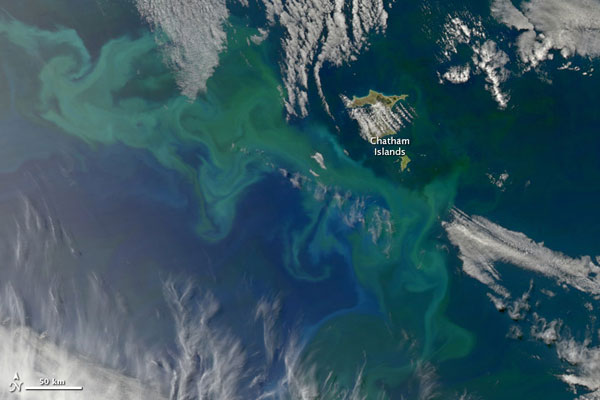Chatham Islands Surrounded by Phytoplankton


The waters around New Zealand's Chatham Islands teem with life. The large annual springtime phytoplankton bloom is very visible in this image, taken by NASA's Aqua satellite on Dec. 5.
The highly productive waters support massive phytoplankton blooms that sustain valuable stocks of fish . Phytoplankton are plant-like organisms that enable the ocean in this region to act as a carbon sink (a place where the ocean takes in more carbon dioxide than it releases).
The bloom, which appears as an array of colors from deep green to electric blue, is primarily made up of phytoplankton, but could easily include of many different types of marine life.
The topography of the ocean floor is what makes this region of the ocean so productive. The floor brings two currents together around the Chatham Islands, which sit on the Chatham Rise, an underwater plateau that stretches from New Zealand's South Island to just beyond the Chatham Islands themselves.
Cold, nutrient-rich, but iron-poor water from the Antarctic flows south of the Chatham Rise, while to the north mostly warm, nutrient-poor, but iron-rich water flows from the subtropics. The two pools of water come together in a current that rides over the plateau, mixing cold water with warm. The mixed water in the current provides both the nutrients and iron fertilizers needed to support large blooms around the Chatham Islands.
- The World's Biggest Oceans and Seas
- Infographic: Tallest Mountain to Deepest Ocean Trench
- Sea Expedition Follows Old Tradition, New Science
Get the world’s most fascinating discoveries delivered straight to your inbox.



